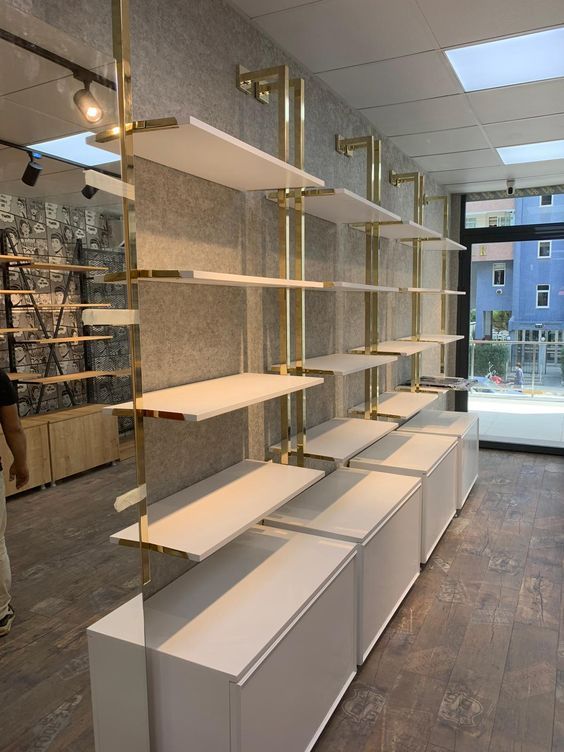
Retail interior design plays a crucial role in shaping the customer experience. The way a store looks, feels, and functions determines how customers interact with the space and whether they make a purchase. A well-designed retail interior not only enhances brand identity but also increases sales by creating a welcoming and engaging atmosphere.
The Role of Interior Design in Retail Success
Interior design directly impacts Retail & Interiors success by influencing customer behavior. A strategically designed store encourages browsing, improves foot traffic flow, and highlights key products. The right combination of layout, lighting, colors, and fixtures can create a positive shopping experience, leading to repeat visits and brand loyalty.
Store interiors should also align with the brand’s message. A high-end boutique should have a luxurious feel, while a tech store should reflect innovation and modernity. Every design element, from the entrance to the checkout counter, contributes to the overall brand perception.
Key Elements of Effective Retail Interior Design
A well-designed retail space consists of several key elements that work together to create a seamless and engaging customer experience.
Store layout and flow play a significant role in guiding customers through the store. The most common layouts include grid, free-flow, boutique, and loop designs. Each layout serves a different purpose, with some maximizing product visibility and others creating an intimate shopping experience. The right choice depends on the store type and target audience.
Lighting and ambiance influence customer mood and buying behavior. Bright and warm lighting enhances the overall appeal, while accent lighting highlights specific products. The combination of natural and artificial lighting should create a comfortable and inviting atmosphere.
Color psychology and branding are essential in retail interiors. Different colors evoke different emotions, affecting how customers perceive a brand. For example, red can create urgency, blue promotes trust, and green signifies eco-friendliness. Choosing colors that align with the brand identity ensures a consistent and recognizable store theme.
Fixtures and display units enhance product presentation and improve the shopping experience. Modular and flexible shelving allows easy adjustments for different promotions and seasonal displays. Well-organized product placement ensures that customers can easily find what they are looking for, leading to higher sales.
Balancing Style & Functionality in Retail Interiors
Retail spaces need to be both stylish and functional. A beautiful store without a practical layout can frustrate customers, while a functional but dull space may fail to attract attention. Finding the right balance between aesthetics and usability is key to creating a successful retail environment.
One way to achieve this balance is by incorporating smart storage solutions. Hidden storage areas behind display shelves or under counters keep excess stock out of sight while ensuring easy access for staff. Multi-functional furniture, such as display tables with built-in storage, maximizes space efficiency without compromising on style.
The choice of materials also affects the balance between style and function. Durable and easy-to-maintain materials ensure longevity while enhancing the store’s visual appeal. Glass, metal, and wood offer a timeless look, while modern materials like acrylic and polished concrete add a contemporary touch.
Trends Shaping Modern Retail Interiors
Retail interior design trends continue to evolve with changing customer expectations and technological advancements. One of the biggest trends is the shift towards sustainable and eco-friendly designs. Many retailers are using recycled materials, energy-efficient lighting, and green building practices to create environmentally responsible spaces.
Experiential retail is another growing trend. Stores are no longer just places to shop; they are immersive environments that engage customers. Interactive displays, augmented reality experiences, and in-store events create memorable shopping experiences that drive brand loyalty.
Minimalist vs. immersive design approaches offer different strategies for engaging customers. Some stores focus on clean, uncluttered spaces that highlight products with minimal distractions, while others create themed environments with elaborate decor and sensory experiences. The right approach depends on the target audience and brand identity.
Case Studies: Successful Retail Interior Transformations
Several brands have successfully transformed their retail interiors to improve customer engagement and sales. One example is a popular fashion brand that revamped its store layout by adopting an open concept with clearly defined sections for different product categories. The redesign improved customer navigation, resulting in increased sales and longer in-store visits.
A tech retailer integrated digital screens and interactive kiosks into its store design, allowing customers to explore products virtually before making a purchase. This innovation enhanced the shopping experience and positioned the brand as a leader in technology-driven retail.
Another example is a sustainable home goods store that incorporated eco-friendly materials and natural lighting into its design. By aligning the store’s interiors with its brand values, the retailer attracted environmentally conscious customers and built a strong brand identity.
Practical Tips for Retailers Looking to Transform Their Interiors
Retailers looking to upgrade their interiors can start with budget-friendly improvements. Simple changes like updating lighting, rearranging displays, and adding fresh paint can create a big impact without significant costs. Investing in high-quality signage and branding elements enhances the overall look and feel of the store.
Optimizing small spaces for maximum impact is another crucial aspect. Strategic shelving, mirrored walls, and well-placed lighting can make a small store appear larger and more inviting. The use of vertical space for displays and storage ensures efficient utilization of every inch.
Technology plays a vital role in modern retail interiors. Smart lighting systems, digital price tags, and interactive kiosks create a seamless shopping experience. Integrating mobile checkout options and self-service stations reduces wait times and enhances convenience for customers.
Conclusion
A well-designed retail interior transforms the shopping experience, boosts sales, and strengthens brand identity. The combination of strategic layout, lighting, colors, and fixtures creates an inviting and functional space. By staying updated with the latest design trends and incorporating innovative solutions, retailers can create a space that is both stylish and practical. Investing in retail interiors is not just about aesthetics—it is a key factor in long-term business success. Retailers should continuously evaluate and upgrade their spaces to stay relevant and competitive in the ever-evolving market.